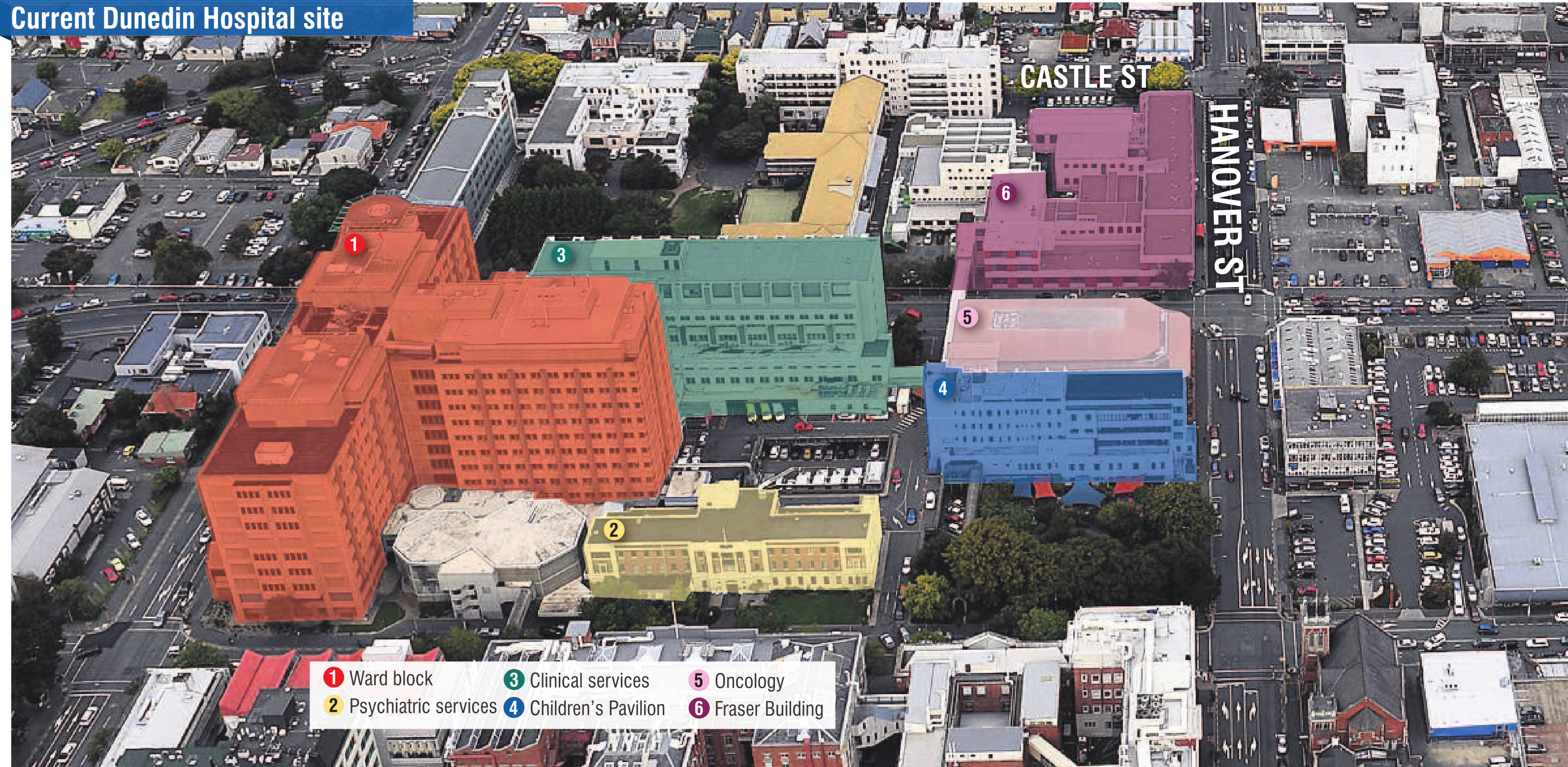
Health Minister Dr Shane Reti and Infrastructure Minister Chris Bishop announced yesterday the new Dunedin hospital was on the chopping block amid budget blowouts, and the government was investigating two scaled-back options.
- Announcement puts hospital project in jeopardy
- Hard work undone: clinicians
- Editorial: Give us the hospital that was promised
The first option was a revision of the project’s specification and scope on the existing site, such as reducing the number of floors, delaying the fit-out of some areas, and "identifying further services that can be retained on the existing hospital site or in other Health NZ buildings within Dunedin among other possible solutions".
The second option was "a staged development on the old hospital site including a new clinical services building and refurbishing the existing ward tower."
Former Dunedin Hospital ED head Dr John Chambers, who retired last year, said the second option had been canvassed repeatedly and was "ultimately unworkable".
"It was the starting-off point over 10 years ago.
"When it was looked at, the logistics were so complicated — and the fact you had to keep the hospital running — it just wasn’t a goer.
"There was a limit to the life of the existing site."
Former Labour Cabinet minister Pete Hodgson, who previously oversaw the construction of the new Dunedin hospital, said neither of the two options would be remotely acceptable.
The second one — a staged development on the old hospital site — had been carefully examined and rejected in 2017, he said.
The first was basically saying the hospital would be built not according to the clinical needs of the region "but according to some predetermined budget cap".
"That would be entirely unacceptable and I don’t know of any other health system in the world that operates on that basis."
The government had undoubtedly faced some difficult cost overruns among other difficulties.
"But at the end of the day, the question is whether or not the southern region will have an adequate clinical facility or will not.
"And if the aim is to build half a hospital then the public response to that will be one of outrage."
Mr Hodgson said the ministers displayed "a telling prejudice against a central city site for the new hospital, talking up problems with piling, flooding, land cost premiums and soil contamination".
"Again, the facts tell a very different story. All piling, all soil remediation and all demolition cost very close to $50million, or about 2.7% of budget. It is now all complete. The last pile was concreted in earlier this week.
"Although the land for the outpatients building cost more than budgeted, we got the land for the inpatients building for a song, because the owners of Cadbury’s wanted to leave town. It cost about $11m, well under 1% of project cost.
"The ministers’ commentary reveals not only a faint acquaintance with the truth but a reprehensible preparedness to parrot a series of prejudices that are well ingrained further north. The unavoidable fact is that the South needs a new hospital, and it needs to be built near the university and polytech."
New Zealand Institute of Medical Laboratory Science (NZIMLS) past-president Terry Taylor said he was "extremely sceptical" of the latter proposal.
"The present situation in the clinical services building is untenable for any long-term redevelopment," he said.
Mr Taylor said any refurbishment while the hospital was still being used would lead to a further "fragmentation" and "confusion" of services, and would add "yet another layer of complexity" to an already complicated system.
Former Southern Health Board chief executive Chris Fleming said the option of redeveloping the existing Dunedin Hospital was well-traversed.
"It is technically possible to redevelop the ward block but it would require either significant disruption to services, or the entire block to be vacant for an extended period of time [years] to be able to safely do."
This could only be achieved if there was space to decant services which was explored in depth but discounted, Mr Fleming said.












